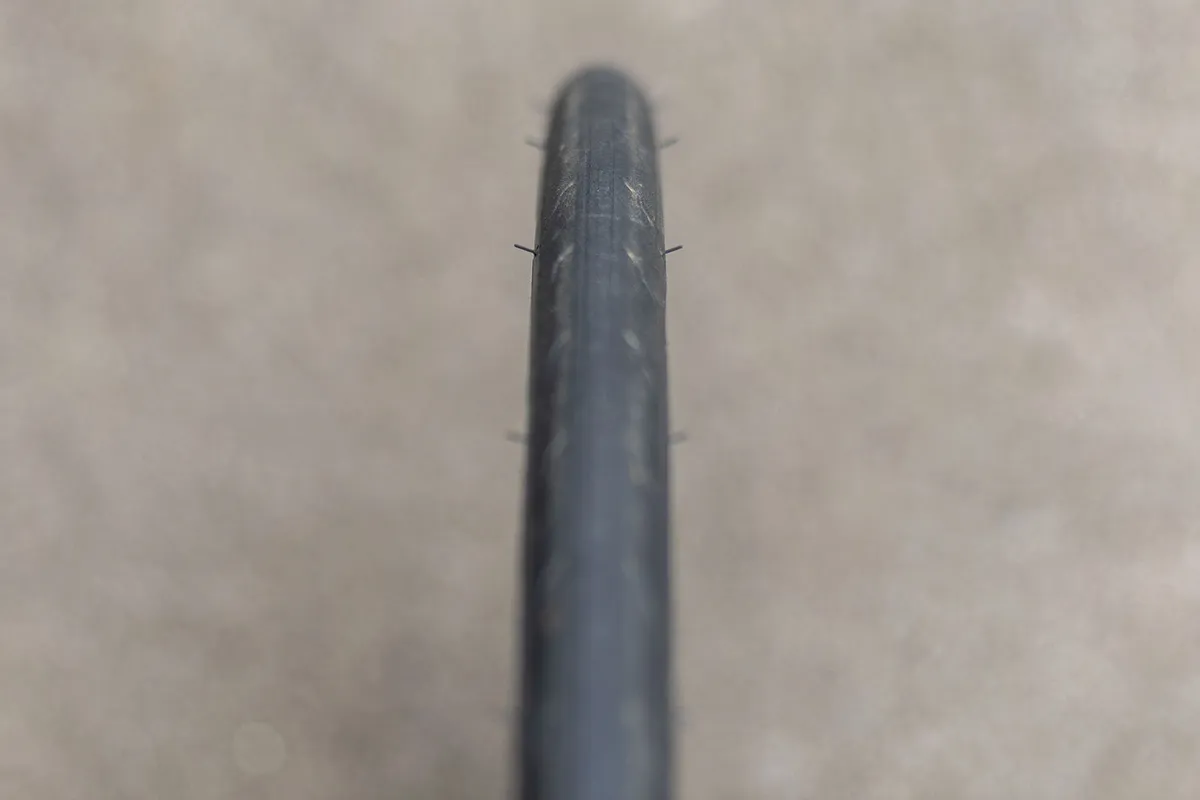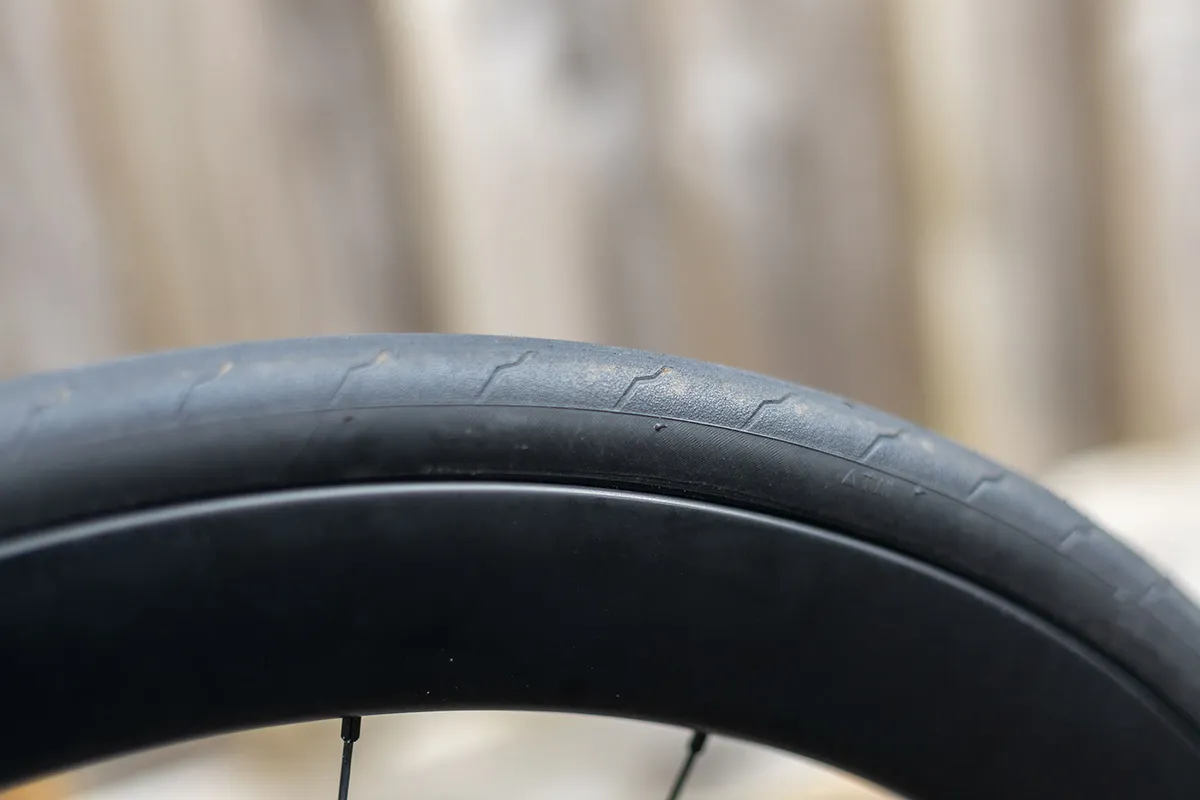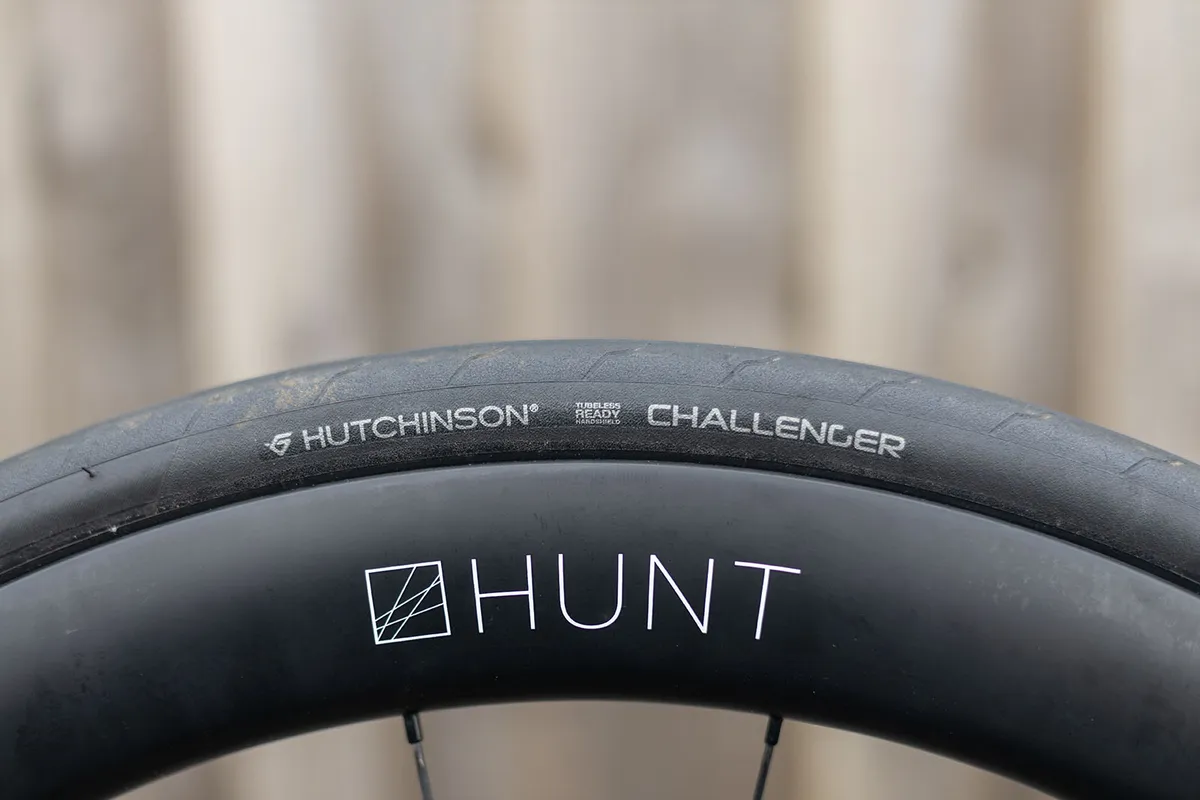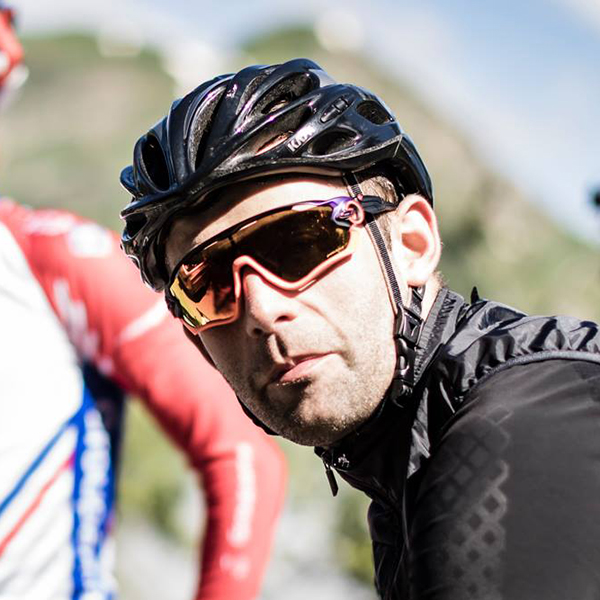The Hutchinson Challenger Tubeless tyre is the French brand’s latest endurance road bike tyre.
With heady claims of a 10,000km lifespan, the French brand even says it’s suitable for sealant-free tubeless riding thanks to its stout, butyl-lined casing.
Although covering a full 10,000km for a useful test period is beyond the scope of this review (and my fitness levels), I’ve been largely impressed by the Hutchinson Challenger Tubeless.
The wear rate appears very low after around 1,500km of riding across seven test wheelsets, I haven't suffered any punctures, and the tyre offers good grip and ‘road feel’.
A sealant-free tubeless seal can’t be guaranteed, though, because the tyre is only one part of a tubeless system that relies on the rim and rim tape being airtight as well.
It may well be possible on certain rims, but without the additional puncture protection offered by tubeless sealant, many will rightly question the value of using a heavier tubeless tyre over a clincher.
Hutchinson Challenger Tubeless tyre details and specifications

The Hutchinson Challenger Tubeless tyre’s headline technologies – Hardshield and Airshield – promise much.
The Hardshield element is said to improve puncture resistance to “previously unseen” levels and comes via two separate layers.
The first, covering the whole tyre, is made of a flexible polyamide material. The second is said to be a strip featuring aramid threads, running along the chief contact patch area.
Hutchinson claims it tested the Challenger against key road tyres (but doesn’t specifically name them), and found they tended to puncture on its test rig inside an 80-120 Newton impact force range. The Challenger Tubeless, it says, resisted punctures up to 170 Newtons.
The French brand also says the tyre has been subjected to real-world testing at the Transcontinental ultra-endurance race. It says the tyre has racked up 9,000km of puncture-free running across two editions of the race, under three riders.
Airshield leads to arguably the most striking claims, with Hutchinson pointing out that it “completely eliminate[s] the common issues of air loss”.
The inner side of the tyre is lined with a butyl layer, while the bead hook is covered in an “abrasion-resistant” coating.
The two are said to help create an airtight seal against a rim, while Hutchinson says the properties of both enable each to deform and flex as required – maintaining an all-important seal without detracting from the tyre’s suppleness.
Of course, there’s no such thing as a free lunch. Adding additional material in this manner increases weight and is likely to increase the rolling resistance of a tyre, compared to forgoing it.
This is because butyl rubber, as some will be aware, is heavier and less flexible than pricier materials such as latex or thermoplastic polyurethane (TPU). Likewise, lighter tubeless tyres typically forgo a liner altogether and rely on tubeless sealant for an airtight seal.
Hutchinson says the bead coating removes the need for firmer bead reinforcement, contributing to improved sidewall flexibility and ride comfort.
Together, though, Hutchinson says the Challenger Tubeless tyre is airtight and puncture-resistant enough to be run without tubeless sealant, if you wish to.
The core of the tyre uses a 3x127 TPI (thread-per-inch) nylon carcass, with a dual-compound outer surface – which Hutchinson calls its ‘Endurance Bi-Compound’.
A comparatively soft compound is used on the shoulders for cornering grip, while the 2.3mm-thick central tread is firmer – which it says contributes to the tyre’s 10,000km claimed lifespan.
The tyre is available in three sizes: 700x25c, 700x28c and 700x32c. This covers the major sizes many riders use, although some might have hoped for even wider options (after all, Pirelli makes its P Zero Race TLR tyre in a 700x40c size, for example, and the Continental GP5000 AS TR can be had as wide as 700x35c).
Only the 28 and 32mm-wide models are compatible with hookless rims, but this is as likely down to the fact that hookless rims tend to be wider than hooked rims, so the 25mm-wide tyres don’t get the seal of approval.
The Hutchinson Challenger Tubeless tyre costs £59.99 / €59.99 – which compares very favourably to £84.99 to £89.99 per tyre for the GP5000 AS TR and £79.99 for the Pirelli P Zero Race TLR 4S.
A 700x28c tyre is claimed to weigh 400g – weighty, but understandable given the fortification Hutchinson says it has put into it. I weighed my test tyres at 394g and 398g each.
Hutchinson Challenger Tubeless installation and setup

I tested 700x28c tyres and fitted them to seven wheelsets with internal width ranges of 19-21mm. All rims had a hooked design.
Across six wheelsets, I used a mix of tubeless and clincher setups.
I came across few issues getting the tyres onto rims, and only needed a dedicated tubeless pump to pop the beads into place on one occasion.
There’s no getting around the fact a good seal on any tubeless system requires the rim, tubeless kit (tape and valves) and tyre to be individually air-tight (sealant is typically used to plug any gaps).
However, the Challenger Tubeless surprised me – on five of the wheels, I saw such little air leakage that I’d have been happy to run them without sealant (considering pressure maintenance over a three to four-hour ride as my only benchmark).
For the other two, sealant was required, but it’s equally true that the leakage might not have been coming from the tyre itself.
It’s also worth remembering that most wheel manufacturers recommend sealant be used to ‘complete’ a tubeless setup – the final safeguard, if you like.
Should you run the Hutchinson Challenger Tubeless tyre without sealant?
Hutchinson says its Challenger Tubeless tyre can be set up tubeless without sealant, but why might you want to do so?
One could argue doing so defeats one of the key reasons to go tubeless – the sealant should seal a hole in the event of a puncture, so little to no time is spent at the side of the road fixing punctures.
Hutchinson says if a puncture were to happen when not using sealant, though, the rider would benefit from being able to put a tube in mess-free, before tending to the tyre repair at home.
For the purposes of my recent alloy wheel test, I did a lot of my riding with butyl inner tubes installed – but the tyres have remained completely untroubled (no insertions and only one notable knick after more than 1,000km of use) by some of the muckiest winter road conditions I’ve ever had to deal with.
This leads me to think that yes, the Hutchinson Challenger Tubeless tyres are capable of maintaining their pressure without sealant and with a heightened chance of not puncturing.
However, this remains dependent on the rims you choose to use the tyres on, while you need to determine if it’s worth not running sealant.
For me, the prevailing sense is that, while the tyres seem capable, I’m unconvinced I would make the conscious decision to go without sealant when it’s my personal weekend ride on the line.
Hutchinson Challenger Tubeless performance
On the road, the Challenger Tubeless tyres performed very well. Puncture resistance seems very good, wear rate is low and their purported operational capabilities tally with my experience.
Additionally, while I wouldn’t put the tyres alongside the Pirelli P Zero Race TLR 4S or Continental GP5000 AS TR for suppleness (the Vittoria Corsa Pro Control TLR is also a leader in this respect), the Challengers are tactile enough to offer a decent sense of the road surface beneath you.
Grip is also good, and the dual-compound tread seems fit for purpose.
I quickly felt comfortable leaning into descending corners, for example, and the central compound gives the sense of low rolling resistance.
While the tyres tended to shape up a little rounder compared to those rival tyres, this is always largely dependent on the rims they were being used on. On wider rims, they shaped up more broadly.
In the wet, I can’t fault them – they feel just as grippy and confidence-inspiring as rivals in challenging conditions – while they stick resolutely in cold weather too (ice notwithstanding).
While the 396g average weight is noticeable versus more speed-oriented tyres of the same size (the GP5000 AS TR weighed 343g and the Corsa Pro Control TLR 314g, for example), this feels like an acceptable compromise given the indications of robustness I’ve seen.
Couple this with the fact the Challenger is up to £30 cheaper than all the rivals I’ve mentioned (the Goodyear Vector 4Seasons Tubeless Complete tyre has it beaten, at £52 per tyre), and there’s a strong case for good value here.
Hutchinson Challenger Tubeless tyre bottom line

The Hutchinson Challenger Tubeless tyre has impressed me in testing, and will represent a strong year-round tyre candidate for many riders.
The sealant-free claims appear well-founded in general, although I’ve found it’s not universally applicable. You’ll need to try it with your wheelset and see – if you’re willing to forgo the puncture-preventing benefits of sealant, of course.
Otherwise, a good blend of ride performance and excellent reliability (to date), coupled with a competitive price, makes the Hutchinson Challenger Tubeless tyre one I can highly recommend.
Product
| Brand | Hutchinson |
| Price | €60.00, £60.00 |
| Weight | 396g |
Features
| TPI | 127 |
| Bead | Tubeless |
| Features | Colours: Black only |
| Tyre sizes | 700x25c / 700x28c / 700x32c |
